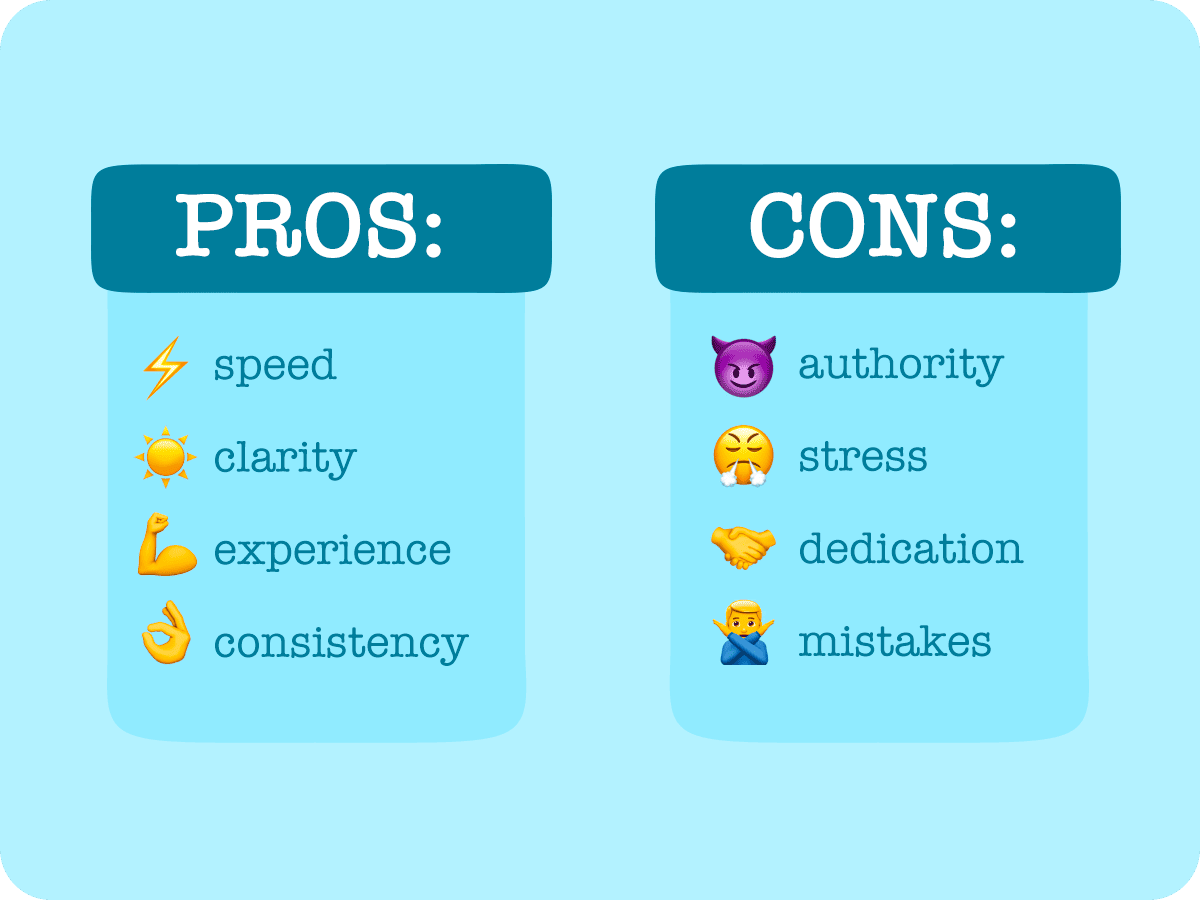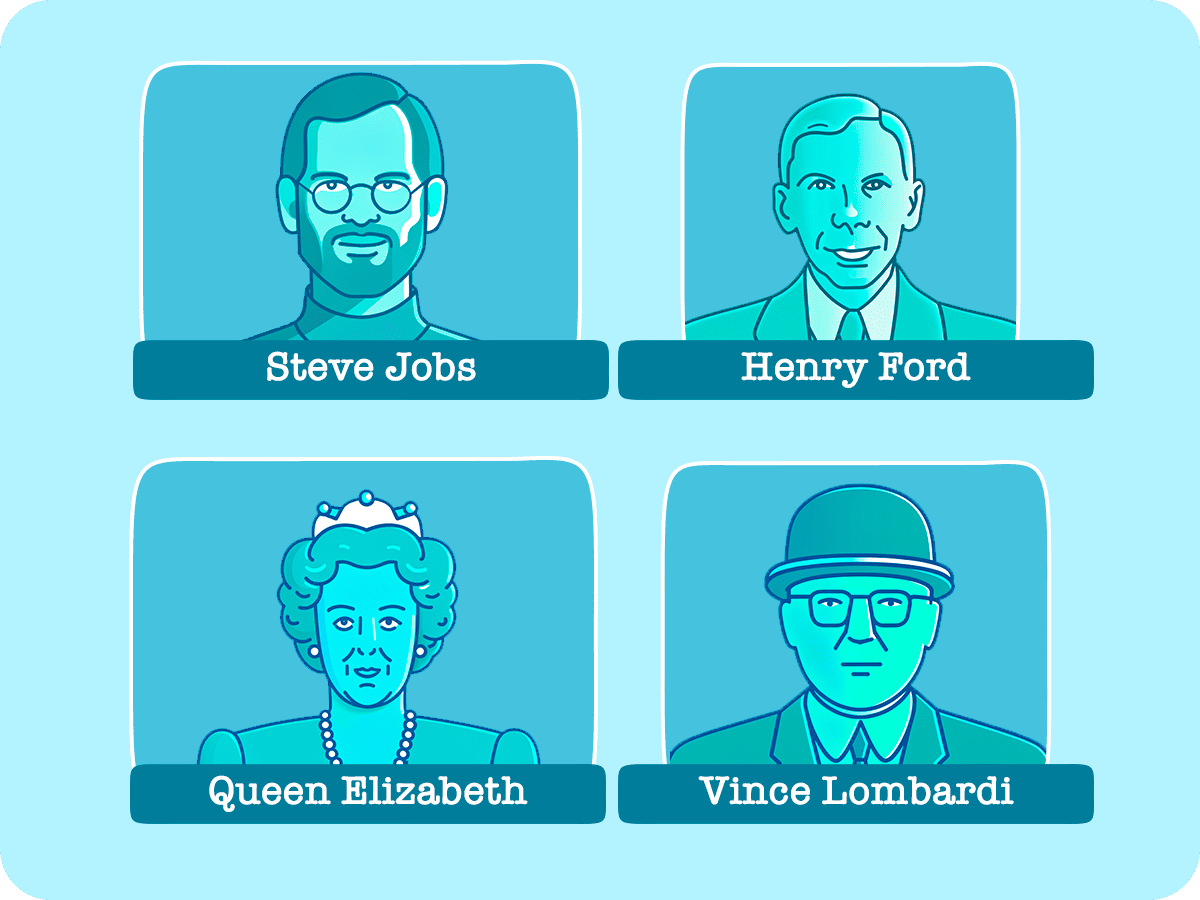Imagine walking into a room where one voice makes all the decisions, where the direction is clear, and the path forward is decided by a single leader. This is the essence of autocratic leadership, a style that has shaped institutions, businesses, and nations throughout history.
Autocratic Leadership is a management style characterized by individual control over all decisions and little input from group members. Autocratic leaders typically make choices based on their ideas and judgments and rarely accept advice from followers.
This leadership style is often seen as traditional and is marked by clear, decisive decision-making. From its historical roots to its modern-day applications, we'll uncover the nuances that make autocratic leadership both revered and reviled.
What is Autocratic Leadership?

When you think of autocratic leadership, picture a ship's captain in the middle of a stormy sea, making quick decisions to navigate safely. Just like the captain, an autocratic leader takes the helm, steering the team with a firm hand, ensuring that everyone knows the direction and follows it without question.
Key Characteristics of an Autocratic Leader
First off, autocratic leaders like to call the shots. This means they make the big decisions without asking for input from the team. It's not about being bossy, but about being sure and quick in making choices.
Another key trait is clear communication. An autocratic leader lays out exactly what needs to be done, how it should be done, and when. There's no guesswork involved.
Autocratic leaders also keep a close eye on how things are going. They want to make sure everything is going right, with no surprises. This means they're often checking in on the work being done, ensuring everything meets their standards.
Now, it's important to understand that being an autocratic leader doesn't mean being unkind or unfair. It's more about being confident and sure in guiding others, especially when there's no time for a long discussion or when the task is really, really important.
In environments where decisions need to be made quickly or when tasks need to be done a certain way, autocratic leadership can be just what's needed.
So, autocratic leadership is about being the one in charge, making quick decisions, communicating clearly, keeping an eye on progress, and guiding the team towards a common goal, especially when time is of the essence or the stakes are high.
Autocratic Leadership in History
Before all the fancy gadgets and technology we have now, leaders had to make tough decisions all on their own. This is where autocratic leadership started.
Think about kings and queens ruling their lands. They had to decide everything, from what crops to plant to how to defend their kingdoms. They couldn't just send a text or an email to ask everyone what they thought; they had to be firm and make the calls themselves.
Back in those days, being an autocratic leader made sense. Information didn't travel fast, and in times of crisis, like battles or natural disasters, there wasn't time to gather everyone's opinions.
As time went on, this leadership style found its way into other areas, like businesses and organizations. Factory owners during the Industrial Revolution acted like those kings and queens, making all the decisions and expecting workers to follow without question.
But it wasn't just about being bossy. These leaders had to know their stuff, make smart choices, and keep an eye on everything to make sure it all worked out.
Even today, you can see autocratic leadership in action, especially in places where decisions need to be made fast, like in emergency services or in the military. It's about having someone with the know-how and confidence to lead the way, making sure everyone stays safe and achieves their goals.
Pros of Autocratic Leadership

Now, let's talk about the good stuff that comes with autocratic leadership. It's not all about being bossy; there are some real benefits when someone takes charge and makes quick decisions.
1) Speed
First up, things get done fast. When there's one person making the decisions, there's no need to wait around for everyone to agree. This can be super helpful when there's a tight deadline or an emergency.
2) Clarity
Then, there's less confusion. With an autocratic leader, everyone knows who's in charge and what they're supposed to do. This can make everyone feel more secure because they know exactly what's expected of them.
3) Experience
Autocratic leadership can also be great for teams that need a lot of direction. Think of a group of newbies learning something for the first time. They might not know the best way to do things, so having a leader to guide them can be really helpful.
4) Consistency
Plus, when there's one person calling the shots, it's easier to keep things consistent. The leader can make sure that everyone is following the same plan, so the work stays top-notch.
Cons of Autocratic Leadership
While autocratic leadership has its perks, it's not all smooth sailing. There are some downsides that we need to chat about, too.
1) Authority
First off, not everyone likes being told what to do all the time. It can make people feel like they're just cogs in a machine, not getting to share their cool ideas or show off their skills.
2) Stress
Then, there's the risk of stress. When one person carries all the weight of making decisions, it can be a heavy load. This can make the leader super stressed and not so great to be around.
3) Dedication
Also, when folks don't get to have a say, they might not be as into their work. They might just go through the motions without putting their heart into it. It's like if you were painting a picture but someone else was telling you every brush stroke to make; you wouldn't feel very proud of it, would you?
4) Mistakes
And here's another thing: mistakes can happen. If the leader makes a bad call, there's no safety net of other ideas or feedback.
5) Stagnancy
Lastly, it can be hard for new leaders to grow. If only one person is always in charge, nobody else gets a chance to learn how to lead.
Autocratic vs. Other Leadership Styles
Let's take a look at how autocratic leadership stacks up against other ways of leading.
First, there's democratic leadership. This style is all about group decisions. It's great for making sure everyone's voice is heard, but it can take a while to decide on anything.
Then we have laissez-faire leadership. This is a super laid-back style where the leader steps back and lets the team run the show. This can be awesome for creative work, but sometimes things can get a bit chaotic without clear directions.
Transformational leadership is another style. This is where the leader is all about inspiring the team and pushing for big changes. This can lead to amazing results, but it needs a lot of energy and passion to keep it going.
Servant leadership flips the script and puts the leader in the role of helper. The leader's main job is to make sure the team has everything they need to succeed. This can create a really positive and supportive environment, but it might not be the best fit when tough decisions need to be made fast.
Famous Examples of Autocratic Leaders

Throughout history, there have been some pretty big names who've shown us what autocratic leadership looks like in action. These leaders made all the calls, for better or for worse, and left a mark on the world.
Steve Jobs
Take Steve Jobs, the tech wizard behind Apple. He was known for his laser focus and high standards. Jobs made most of the big decisions at Apple, from the design of the iPhone to the way the stores looked.
His leadership helped Apple create some game-changing products, but it was also known to be pretty tough on the team.
Queen Elizabeth I
Then there's Queen Elizabeth I from the 16th century. She ruled England with a strong hand, making decisions that set the course of history, like defeating the Spanish Armada.
Her leadership style was all about holding the reins tightly, but it helped England become a major player on the world stage.
Henry Ford
Henry Ford, the car guy, was another autocratic leader. He revolutionized the auto industry with his assembly line, making decisions that changed how cars were made forever.
Ford had a clear vision and made sure everything was done his way, which led to huge successes but also some criticism for being too controlling.
Vince Lombardi
In the sports world, Vince Lombardi, a legendary football coach, showed us what autocratic leadership looks like on the field. He was all about discipline and didn't shy away from making the tough calls.
His approach led his team, the Green Bay Packers, to win five NFL championships, proving that his style could bring home the gold.
Examples of Autocratic Leadership

1) Emergency Response Team
Imagine a situation where an emergency response team is dealing with a natural disaster, like a major earthquake.
The team leader, an experienced disaster management expert, needs to make quick, decisive calls to coordinate rescue efforts, allocate resources like food, water, and medical supplies, and decide which areas to prioritize for assistance.
In the chaos following a disaster, there's no time for group discussions; the leader's autocratic decision-making ensures a swift response to save lives.
2) Restaurant Kitchen
Picture a high-end restaurant kitchen during the busiest night of the year, perhaps New Year's Eve. The head chef, known for their exceptional culinary skills and high standards, runs the kitchen with precision.
Every dish must be perfect, and there's no room for error. The chef directs each cook exactly what to do, how to do it, and when it needs to be ready, ensuring that every plate that leaves the kitchen maintains the restaurant's stellar reputation.
3) Manufacturing Plant
Consider a manufacturing plant that's about to launch a new, highly anticipated product. The plant manager, an expert in production efficiency, takes an autocratic approach to ensure the launch deadline is met.
They set strict schedules, oversee every aspect of the production line, and make unilateral decisions on how to address any issues that arise, such as equipment malfunctions or supply shortages, to ensure the product is ready for launch.
4) Software Development Team
Envision a software development team working on a crucial update for a cybersecurity application. The project manager, with years of experience in software development and cybersecurity, adopts an autocratic style to navigate the team through the tight deadline.
They assign specific tasks, set clear deadlines for each phase of the project, and make on-the-spot decisions on how to resolve bugs and technical challenges to ensure the update is deployed on time and secures the clients' digital assets.
5) Film Production Set
Imagine a film set where the crew is racing against time to complete shooting before their permit expires in a historic location. The director, known for their visionary work and attention to detail, takes charge with an autocratic leadership style.
They direct every scene with precision, make quick decisions on shot angles, lighting, and actor performances, and adjust the day's schedule on the fly to adapt to unforeseen challenges like weather changes or technical hiccups.
The director's clear, decisive commands and quick problem-solving ensure that the film remains on schedule, capturing the needed footage while maintaining the creative integrity of the project.
Balancing Autocratic Leadership

Even though autocratic leadership can be super effective in certain situations, it's not without its hurdles. If you want to be a more effective autocratic leader, here are some ways to handle the tricky parts without tripping up:
Keeping Communication Open: Imagine you're the captain of a sports team that's used to calling all the plays. To keep your team in the game, instead of just giving orders, you also explain the "why" behind your decisions during practice. This helps your teammates understand the strategy and keeps them feeling involved, even if they're not the ones making the calls.
Recognizing Team Efforts: Think about a teacher who leads the class project by deciding the topic and assigning tasks but makes a point to celebrate each student's contribution. By acknowledging the hard work and ideas of each student, the leader can boost morale and keep everyone motivated, even in a more directive environment.
Flexibility in Decision-Making: Consider a project manager who usually decides the project's direction but faces an unexpected challenge that requires creative thinking. By temporarily adopting a more collaborative approach, gathering insights from the team, and then making an informed decision, the leader can navigate the challenge more effectively while still maintaining overall control. Remember, communication is key.
Providing Learning Opportunities: Picture a head chef who runs a tight ship in the kitchen but also sets aside time for junior chefs to lead smaller sections or experiment with new dishes. This approach allows for personal growth and skill development within the structured environment, preparing team members for future leadership roles.
Balancing Firmness with Empathy: Envision a production line supervisor known for their strict standards but who also takes the time to listen to their workers' concerns and challenges. By balancing the need for efficiency with understanding and support, the supervisor can maintain high productivity while ensuring a positive workplace atmosphere.
By addressing these challenges thoughtfully, autocratic leaders can maintain the benefits of their decisive, efficient style while accounting for potential downsides, creating a more harmonious and effective team environment.
Conclusion
It's clear that this style has a unique place in today's fast-paced, complex organizations. An autocratic leader can guide a team through tight deadlines and critical challenges with confidence and clarity.
But remember, the key to successful autocratic leadership isn't just about being in charge; it's about knowing when to take the reins and when to loosen them. It's about blending the strength of decisive action with the wisdom of listening and adapting.
In modern workplaces, where innovation and collaboration are prized, autocratic leadership can still shine, especially in situations that call for quick decisions and clear direction.
However, the most effective leaders are those who recognize the value of different styles and can switch gears when needed.
So, as you move forward, whether you're leading a team, running a project, or just navigating your own path, remember the lessons of autocratic leadership. It's a tool in your toolkit, ready to be used when the situation demands it, but always balanced with a dash of empathy, a pinch of flexibility, and a healthy measure of respect for the team's voice.



